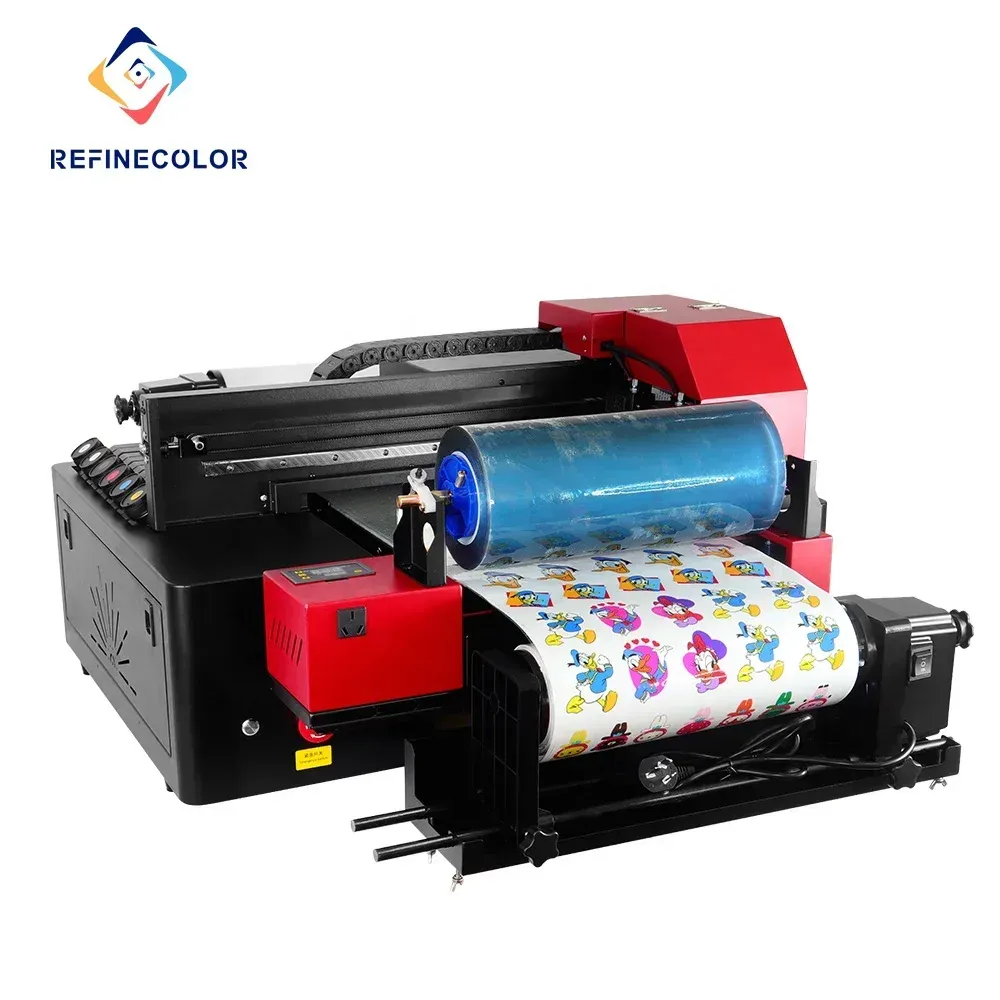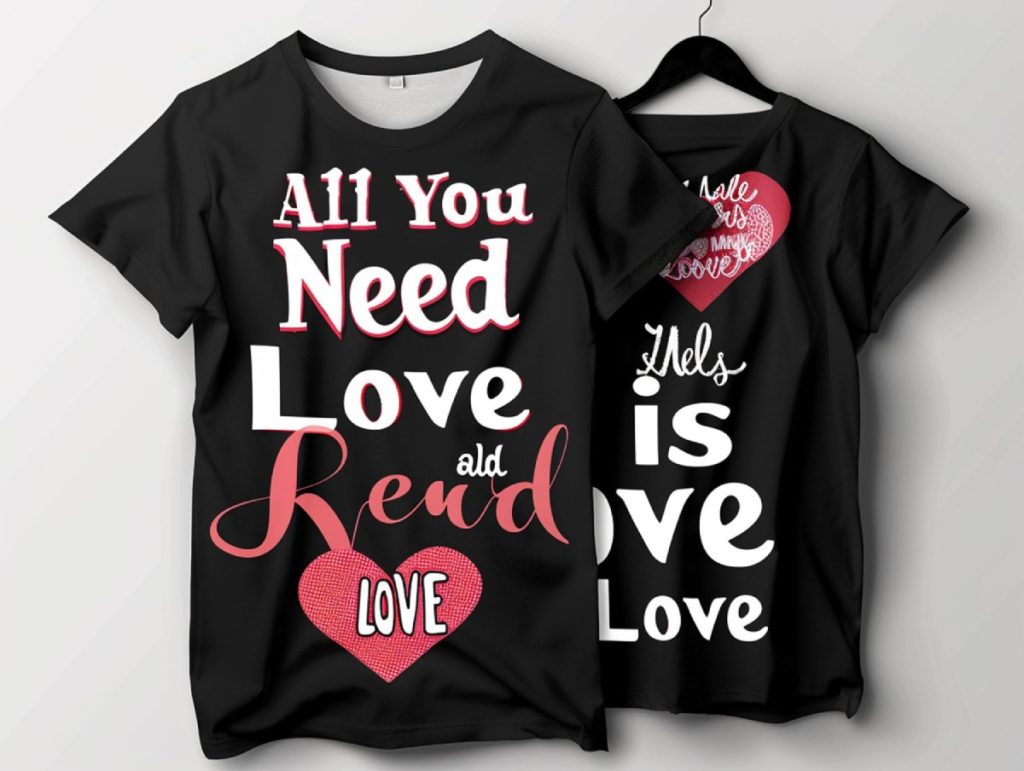In the realm of innovative printing technology, UV DTF has emerged as a transformative force, reshaping how designers approach creative projects. This advanced UV Direct to Film (DTF) printing method not only elevates the quality of printed outputs but also expands the range of materials and surfaces available for printing. By utilizing state-of-the-art UV printing technology, designers can achieve striking results with vibrant colors and intricate details. The benefits of UV DTF are numerous, including exceptional durability and impressive versatility in applications, making it a rapidly favored technique in the design community. As we explore the remarkable advantages of UV DTF, it becomes evident that this technology is not just a trend but a significant leap forward for contemporary design.
Also known as UV Direct-to-Film printing, this cutting-edge method leverages ultraviolet light and specialized inks to create stunning, high-quality images on various materials. Designers are increasingly turning to this form of UV printing technology due to its impressive characteristics, which include fast curing times and a broad compatibility with different substrates. The advantages of UV DTF are vast, encompassing everything from durable prints that resist wear and fading to rich color reproduction that captivates consumers. With its adaptability and strong environmental credentials, this innovative approach is paving the way for new creative opportunities across diverse industries.
Understanding UV DTF Printing Technology
UV Direct to Film (DTF) printing is at the forefront of modern printing technologies, leveraging ultraviolet light to cure specially formulated inks that adhere excellently to a variety of surfaces. The process begins with printing high-quality graphics onto a film, which is subsequently exposed to UV light, solidifying the ink instantly. This technology not only speeds up production times but also reduces waste associated with traditional drying processes. By utilizing UV technology, printers can achieve a level of detail and resolution that stands out in the competitive landscape of design.
The essence of UV DTF lies in its ability to print on any flat substrate including textiles, metals, and wood, thereby accommodating a wide range of design needs. The flexibility of materials that can accept UV DTF prints means designers are no longer restricted, allowing for unmatched creativity and innovation. As designs become more intricate, the precision enabled by this printing method enhances the final product, making it appealing to both creators and consumers.
The Benefits of Using UV DTF Printing
The benefits of UV DTF printing are numerous and particularly noteworthy in today’s fast-paced design world. One key advantage is its ability to produce vibrant colors and fine details that traditional screen printing cannot match. As the UV curing process solidifies the ink instantly, it minimizes the risk of blurring or smudging, ensuring that each print showcases the intended artwork in stunning clarity. This quality is essential for brands looking to make an impactful statement through their visual communications.
Furthermore, UV DTF prints exhibit exceptional durability, providing resistance against scratches, fading, and general wear and tear. This ensures that products maintain their visual appeal even after prolonged use. For businesses, this translates to increased customer satisfaction, as products retain their aesthetics over time, reinforcing brand loyalty. In a market that increasingly values quality, the longevity of UV DTF printed items is a significant competitive edge.
Versatile Applications of UV DTF Printing
The versatility of UV DTF printing opens up an array of applications across different industries. Designers can utilize this technology to create everything from custom apparel that stands out due to its unique textures and colors to promotional materials that demand attention. This adaptability makes UV DTF a preferred choice among businesses seeking to diversify their product offerings. Whether it’s customized gifts, signage, or even home decor, the possibilities are virtually endless.
Moreover, this printing technology facilitates quick turnarounds for individual orders or bulk runs without compromising quality. The ability to achieve various finishes—such as matte, gloss, or even textured—enhances the end product, further appealing to niche markets. As trends continue to evolve, the flexibility of UV DTF enables designers to stay ahead of the competition, swiftly adopting new styles and ideas.
Environmental Impact and Sustainability in UV DTF Printing
In the contemporary design landscape, sustainability is no longer a niche concern but a primary driver behind many purchasing decisions. UV DTF printing aligns well with eco-friendly practices, as many inks used in this technology are low in volatile organic compounds (VOCs). This lowers harmful emissions, making it a more environmentally responsible choice compared to traditional printing methods. Designers and companies that prioritize sustainability will find that embracing UV DTF not only supports their ecological objectives but also resonates with increasingly eco-conscious consumers.
Additionally, the efficiency of UV DTF printing contributes to reduced material waste, as the method allows for precise printing with fewer errors compared to conventional techniques. This means companies can maximize resource utilization, subsequently lowering their costs and environmental footprint. As global awareness of sustainability grows, the advantage of using UV DTF technologies becomes not only a competitive edge but a necessity for modern businesses.
Challenges in Adopting UV DTF Technology
While the advantages of UV DTF printing are evident, it is crucial to acknowledge the challenges associated with adopting this technology. Initial investment costs for UV DTF printers and related equipment can be significant, which may deter small businesses or start-up designers. The financial barrier can often pose a hurdle in switching from traditional methods to advanced printing technologies. Moreover, the need for trained staff to operate new machinery and maintain printing quality adds to the complexities of implementation.
Training technicians to proficiently handle UV DTF equipment is essential, as improper handling can lead to subpar prints. Additionally, ongoing maintenance may require specialized knowledge, which could create further costs or operational downtime. Despite these challenges, the long-term benefits of UV DTF technology—particularly regarding quality and versatility—often outweigh the initial setbacks. As the technology continues to advance and become more widely adopted, these barriers are likely to diminish.
The Future of UV DTF Printing in Design
Looking ahead, UV DTF printing is poised to play a significant role in the future of design. As advancements in printing technology continue to emerge, including improvements in LED UV curing systems and ink formulation, the capabilities of UV DTF will only expand. This creates exciting opportunities for designers to explore complex applications and innovative design elements that were once unattainable.
In addition, the potential for integrating UV DTF printing with other technologies, such as digital fabrication and augmented reality, could lead to groundbreaking results in product personalization and user engagement. As the demand for unique, customized items increases, UV DTF’s flexibility and quality will solidify its status as a staple in the designer’s toolkit, ensuring that it remains relevant and in-demand for years to come.
Frequently Asked Questions
What is the UV DTF printing process and how does it work?
UV DTF printing, or UV Direct to Film printing, involves the use of UV-curable inks that are printed onto a specialized transfer film. After printing, the design is cured with ultraviolet light, which dries the ink instantly, forming a durable and vibrant layer. This allows the printed image to be transferred onto various substrates, enhancing the versatility of applications for designers.
What are the advantages of using UV DTF printing over traditional methods?
The advantages of UV DTF printing include its versatility in applying prints to a wide range of surfaces, superior durability against fading and scratching, vibrant colors with intricate detail retention, and environmentally friendly options due to low VOCs in many UV inks. These benefits make UV DTF a preferred choice among modern designers.
How does UV DTF printing enhance the durability of printed items?
UV DTF printed items exhibit enhanced durability because the UV inks are designed to resist fading, scratching, and washing. The curing process solidifies the ink layer, ensuring that colors remain vibrant and designs stand up to the rigors of everyday use, making it an ideal choice for products that require longevity.
Can UV DTF printing be used on various materials?
Yes, one of the key benefits of UV DTF printing is its ability to print on a diverse range of materials, including textiles, wood, metal, and plastics. This versatility allows designers to explore creative possibilities across different products, including custom apparel, promotional items, and decorative surfaces.
Are there environmentally friendly options available in UV DTF printing?
Yes, many UV inks used in UV DTF printing are developed to be low in volatile organic compounds (VOCs), making them a more sustainable choice for eco-conscious designers and consumers. This aligns UV DTF printing with growing environmental standards in the printing industry.
What challenges do designers face when adopting UV DTF printing technology?
Designers may face challenges such as high initial setup costs for UV DTF equipment and the need for specialized training to operate and maintain the technology. Additionally, ensuring consistent quality and adapting to rapid technological advancements can be hurdles for some businesses embracing this innovative printing method.
| Key Point | Description |
|---|---|
| What is UV DTF Printing? | A printing process using UV-curable inks on a transfer film, cured with ultraviolet light for durability. |
| Versatile Applications | Allows printing on various surfaces (textiles, wood, etc.), leading to diverse products. |
| Durability and Longevity | UV DTF prints are resistant to fading and scratching, maintaining vibrancy over time. |
| Vibrant Colors and Fine Details | Enables bright colors and intricate designs, with clarity preserved through the curing process. |
| Environmentally Friendly Options | Uses low VOC inks, aligning with sustainable practices and appealing to eco-conscious consumers. |
| Market Growth | Increasingly popular in custom apparel and promotional sectors with advancements in LED UV curing. |
| Challenges in Adoption | High initial equipment costs and the need for specialized skills can hinder widespread use. |
Summary
UV DTF is an innovative printing technology that is transforming the landscape for designers. Its ability to print vibrant colors and detailed designs on various surfaces makes it a highly sought-after solution. The versatility of UV DTF allows for creating a wide array of products, enhancing the creative possibilities for artists and manufacturers alike. Additionally, its durability ensures that prints stand the test of time, appealing to both designers and consumers looking for quality. As the market for UV DTF expands, the challenges related to equipment costs and training are being addressed, making it more accessible for all. Embracing UV DTF not only fulfills the growing consumer demand for high-quality prints but also aligns with modern, eco-conscious practices, marking a significant shift in the printing industry.



